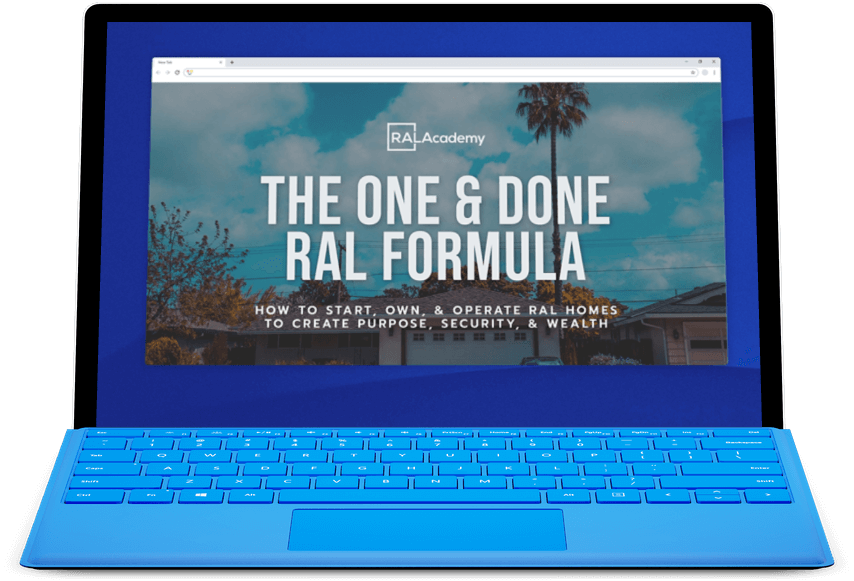Learn more about RAL and the Academy
Frequently Asked Questions
The average in America today is $5,350 per month for a private room in assisted living. That includes everything from Medicare, Medicaid, to the highest privately paid. The idea of $5,350 is average but you’re more than likely going to be above average. You wouldn’t want to put mom in an average place, when you pull up you don’t even want to slow down the car.
Average or above, so $5,350 to $7,000 a month is what people pay for private assisted living homes. That’s the sweet spot, that’s the focus, that’s what we teach people how to do. That’s what you should plan on paying if you’re going to move into somebody else’s home. If you want to live for free, start your own home.
Most of the people live in a residential assisted living facility are not as mobile as you might imagine. A lot of homes like the ones we train students to open are homes where the residents stay pretty much all the time.
We teach our students how to create an engaging entertainment schedule. Often the entertainment is brought in to them such as sing-a-longs, senior yoga, pet therapy, bingo, watching TV, as well as eating. Mealtime becomes very important.
Ultimately, spending time with each other as well as their visitors is what they enjoy most—even a visit from you, the facility manager or owner.
See an example schedule here.
Finances. Does the manager of the home or the caregivers manage and handle the resident’s finances?
The answer in our homes is absolutely not. It’s a matter of fact.
We encourage them not to bring any valuables to the home itself. We will take care of everything. There’s no need for them to have cash or bank account of their own that they can access directly.
Now again, they have the ability to do it, but we don’t do that in the home.
They are adults and if they’re not able to take care of themselves, there’s typically somebody that has power of attorney to take care of those things for them so we don’t handle their flow of cash in the home. We let the family take care of it.
Do the residents have their own cars or do they need transportation?
Well, most residents do not drive. They gave up the license along time ago and most homes don’t provide transportation for them. They can arrange the transportation, but most of the time it’s the family that’ll pick them up, taking them to a doctor’s appointment or an event somewhere.
Now, if you’re going to take them to a doctor’s appointment, I do suggest a little marketing tip for you. Have one of the caregivers or even the manager go with them. They’re going to get the information straight from the doctor. You’re going to get no confusion about what care that resident needs, and it’s a great way to get right into a referral source. That doctor, the hospital, the case worker. It’s a great way to get additional marketing and get the word out about your home and what it is you have to offer.
A question being asked more and more is, “What about medical marijuana?”
In many states they are now allowing the use of medical marijuana. We always think about somebody who’s doing it for the wrong reasons, getting high or something like that. But when it comes to the medical reasons and purposes, whether it be anecdotal or actual physical, there is a real benefit to medical marijuana. And if a resident does have the prescription and they do have it available, it’s usually not something that is smoked in the odorous throughout the house. It’s usually an edible of some kind or some other way where they’re consuming it or others don’t even notice.
So yes, we’ve had residents who do use medical marijuana. It’s not very often, not very frequent, but in my experience, it’s been a good situation. It’s something that’s been a benefit to some of those seniors.
Do they allow smoking in assisted living home? The answer is if there’s a designated smoking area outside, some homes do.
As a matter of fact, in some states, they require you to have an area outside that is designated just for smoking.
In assisted living, you cannot smoke in the house in a facility of any kind. It wouldn’t be healthy, just kind of obvious, but that is the rule.
You should have an area set up outside, away from the house for those that do need to or want to smoke. Not very common, but if you need it, you got it.
Have more questions about assisted living?
Find answers to more questions and discover valuable information on how to succeed in Residential Assisted Living on our YouTube channel.



